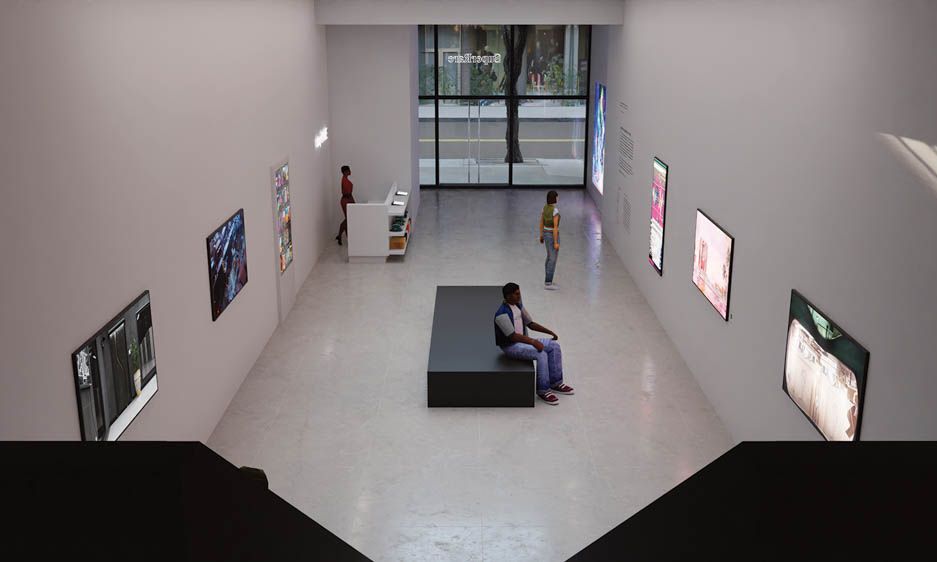The SuperRare gallery, a three-month pop-up, opened with its first exhibitionVisions from Remembered Futures Courtesy of SuperRare
Despite, or perhaps because of, the colossal downturn in cryptocurrency markets, NFT platforms have recently been turning to a historically costly model that takes their meta-communities out of the ether and into brick-and-mortar shops.
In May, the NFT marketplace SuperRare opened a physical gallery in Manhattan’s Soho, on West Broadway, despite what seemed to be an impending market disaster. “It was really kind of an experiment,” says Jonathan Perkins, the co-founder and chief product officer of SuperRare Labs. “We wanted to gauge the interest in this and see what it could look like to keep it open, or potentially expand to other cities in the future.”
By all accounts their experiment has been a success. On 20 June, the gallery held an exhibition that Perkins called a “collector takeover”, with every work on view from the collection of digital arts patron Cozomo de’ Medici. According to Perkins, more than 300 visitors came through the gallery for the show.
Physical NFT galleries could go a long way to changing the public perception of the inscrutable digital works from pixelated punks and garish gorillas to something closer to fine art. “When you have a big, beautiful, digital frame in a gallery setting and someone’s got a glass of champagne in their hand you say, ‘Oh, that’s it,’ so there’s this educational aspect that helps people understand for the first time,” Perkins says.
And, of course, with a physical space it is much easier to motivate the insular communities so prevalent in the metaverse and invite people into the fold. “When you see photos on Instagram of a party happening in the gallery with the works on the wall, it legitimises the whole space,” Perkins says. SuperRare is not the only platform attempting to educate and legitimise the medium through traditional galleries. Superchief Gallery NFT, Bright Moments and Quantum Art have all opened physical NFT galleries in the US over the past year.
“The idea makes sense, but perhaps the timing was bad,” says the art market economist and author Magnus Resch, who in June published the book How To Create And Sell NFTs. “Prohibitively high prices and a complicated entry into collecting are the biggest problems with NFTs. But by holding events and educating people you’re building trust.”



